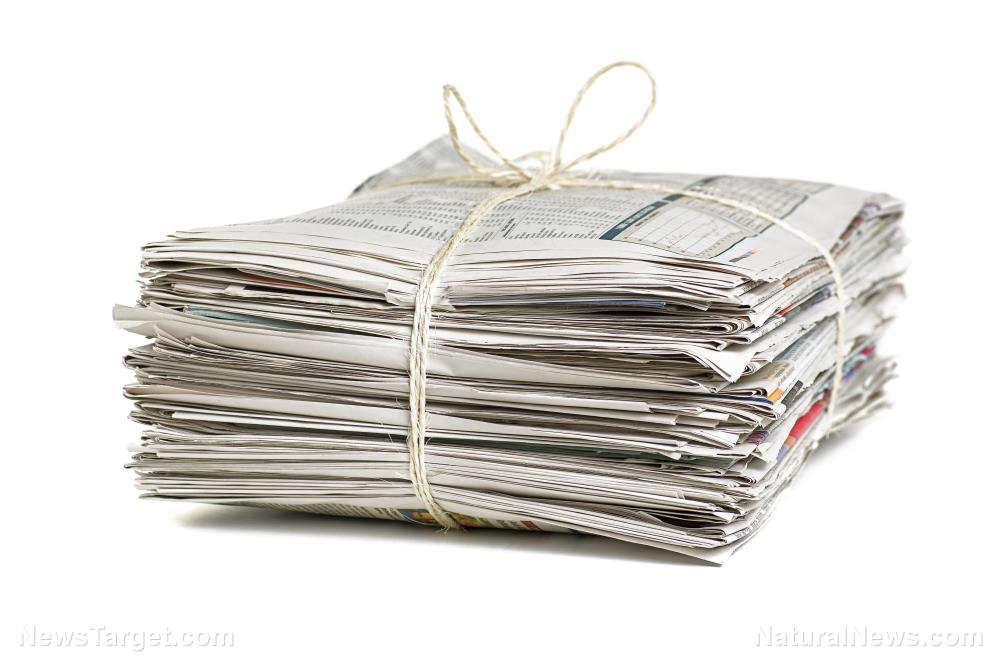
It is estimated that paper constitutes around a quarter of landfill waste and 33 percent of municipal waste. Learning how to recycle and applying these techniques consistently can significantly improve our living situation. Recycling a ton of paper can save around 700 gallons of oil, 26,500 liters of water, and more than 15 trees. Newspapers are a resource that can be used for other purposes after they are read. Take a look at five ways you can recycle newspapers. (h/t to ReadyNutrition.com)
Fuel
It is crucial to always be prepared for every eventuality. It is never an easy topic to discuss but taking the extra measure to be prepared will prove to be invaluable. Newspapers tend to accumulate quickly in our homes. These digests can be used as a fire-starting material during winter. During summertime, you can opt to create bricks out of torn, soaked newspapers that are compacted.
There are presses that can be bought at any hardware store. You would first need to shred the newspaper. The pieces need to be wet and then placed into a newspaper press. To properly layer the wet strips into the press, make sure to follow the instructions that come with the equipment. Once the press is full, a lever is pulled to squeeze the moisture out of the paper. It would be best to do this outside in order to minimize accidents; it is a very messy process. It can take several lever presses before you have a “brick.” These bricks need to be allowed to dry under the sun, which can take several days depending on how large the brick is. Typically, several to a dozen of these bricks can be made in a single afternoon. The compacted newspaper block can burn for around 45 minutes to an hour.
Another great fuel option: Newspapers can be cut into three-inch strips, rolled tightly, and then soaked in paraffin. The rolled strip can be placed inside an aluminum can or a similarly-shaped container. Insert a wick inside the strip and then use these as a candle.
Insulation
During emergencies, the priority is keeping warm. This applies to food as well. Newspapers may not be an ideal insulating material but it will suffice. Roll thermoses and canteens in several layers of newspaper to protect them against extreme weather conditions. You can also ball or crunch a series of newspapers and settle the thermos in the middle of a box, surrounded by the scrunched up paper. This gives the necessary insulation to keep your food and beverages warm.
DIY paper
Newspapers are the most commonly recycled material for “new” paper. The beauty of this process is that several other materials can be used, such as leaves or grass. You are limited only by your creativity. Take note that black and white newspapers are preferred as colored ones tend to leach off and produce muddy-looking paper. If you need a little inspiration, you can find plenty of how-to videos and tutorials online.
For emergencies
Again, not an ideal option but what newspapers lack in quality, they make up for in quantity. Newspapers can be used for emergency insulation. Those who live off the grid recommend keeping a stack of unused newspapers in your vehicle. You never know when you might need them. You can store a bulk of clean, crisp newspapers in bins for future use, just make sure they stay dry.
Transporting food
Newspapers can be wrapped around fresh meat and fish and transported during winter. The paper gives an added layer of insulation. During summer, newspapers keep flies away. Remember that fresh meat should not be kept wrapped in newspapers for long -- especially when the weather is warm. The meat can become tainted with the various ink chemicals of the paper. Newspapers are only meant to be used as a convenience. Fresh meat and fish should be placed in a proper storage container once they have been transported in a newspaper.
Sources include:
Please contact us for more information.





















